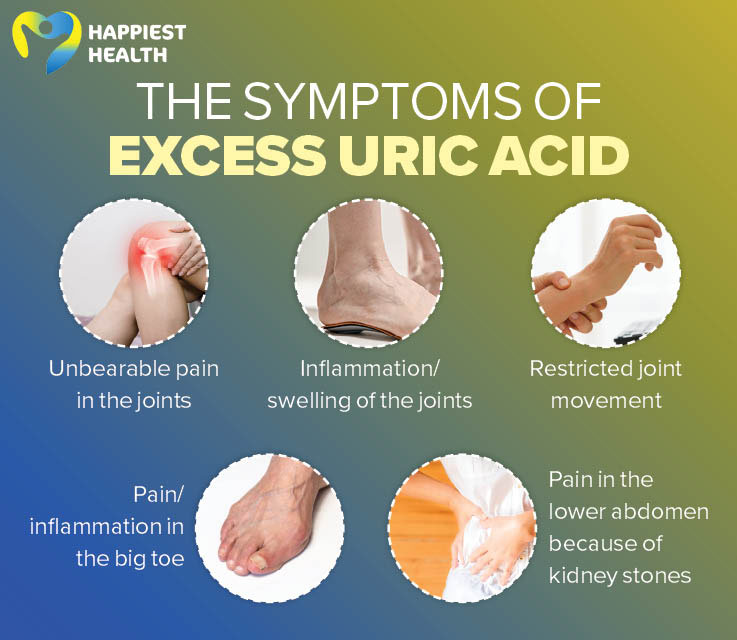Uric Acid(Uric A)

Uric Acid(Uric A): Understanding Its Role and Implications
Definition:
Uric Acid(Uric A) is a waste product formed from the breakdown of purines, substances found in certain foods and drinks, as well as in the body’s own cells. It is normally dissolved in the blood and eliminated through the kidneys into the urine. Elevated levels of uric acid can lead to various health issues, particularly gout and kidney disease.
Importance of Uric Acid
Metabolic Indicator:
- Uric acid levels can serve as an important marker for metabolic health. Elevated levels may indicate conditions such as hyperuricemia, which can lead to gout or kidney stones.
Gout:
- Gout is a form of inflammatory arthritis characterized by sudden and severe pain, redness, and swelling in joints, often due to the crystallization of uric acid in the joints.
Kidney Function:
- High uric acid levels can contribute to kidney damage over time, as they may form crystals that can obstruct renal tubules and impair kidney function.
Causes of Elevated Uric Acid Levels
Dietary Factors:
- Foods high in purines, such as red meat, organ meats, and certain seafood (e.g., sardines, anchovies), can lead to increased uric acid production.
- Alcohol consumption, particularly beer and spirits, can also elevate uric acid levels.
Decreased Excretion:
- Various kidneys and renal diseases such as Chronic Kidney Diseases (CKD), Diabetic Nephropathy (DN), Familial Focal Segmental Glomerulosclerosis (fFSGS), Polycystic Kidney Disease (PKD), Acute Kidney Injury (AKI) ,Glomerulonephritis (GN), Alport Syndrome (AS), Lupus Nephritis (LN), Nephrotic Syndrome (NS), Kidney Cysts, Renal Ischemia-Reperfusion (IR) Injury, Acute and Chronic Kidney Failure, End-Stage Renal Disease (ESRD), Renal Fibrosis can impair the kidneys’ ability to excrete uric acid effectively.
Obesity:
- Increased body weight is associated with higher uric acid production and decreased renal clearance.
Medications:
- Some medications (e.g., diuretics) can increase uric acid levels by affecting renal function.
- Genetic predisposition can play a role in how the body metabolizes purines and excretes uric acid.
Diagnosis of Hyperuricemia
Serum Uric Acid Test:
- A blood test measuring the concentration of uric acid in the serum is commonly used to diagnose hyperuricemia.
Urine Test:
- A 24-hour urine collection may be conducted to assess uric acid excretion and help determine whether high levels are due to overproduction or underexcretion.
Joint Aspiration:
- In cases of suspected gout, synovial fluid may be aspirated from an affected joint and examined for urate crystals.
Management of Elevated Uric Acid Levels
- Dietary changes to reduce purine intake (e.g., limiting red meat and seafood), weight loss, increased hydration, and reduced alcohol consumption are recommended.
Medications:
- Medications such as allopurinol or febuxostat may be prescribed to lower uric acid levels by inhibiting its production.
- Colchicine or non-steroidal anti-inflammatory drugs (NSAIDs) may be used to manage acute gout attacks.
Monitoring:
- Regular monitoring of serum uric acid levels is important for individuals with a history of gout or kidney disease to prevent complications.
Conclusion
Uric acid plays a significant role in metabolic health and kidney function. Understanding its implications helps guide effective management strategies for conditions like gout and chronic kidney disease. Early detection and intervention are crucial for preventing long-term complications associated with elevated uric acid levels.
Consult with Our Team of Experts Now!
At DrStemCellsThailand‘s Anti-Aging and Regenerative Medicine Center of Thailand, we specialize in comprehensive evaluations for patients with elevated uric acid levels and related conditions. Our team focuses on innovative therapies aimed at improving overall health outcomes. If you or a loved one is facing challenges related to uric acid management, consult with our experts today!
Consult with Our Team of Experts Now!
References
- Choi HK et al. “Purine-Rich Foods, Dairy and Protein Intake, and the Risk of Gout in Men.” New England Journal of Medicine. 2004; 350(11): 1093-1103. DOI: 10.1056/NEJMoa035700.
- Richette P et al. “Gout.” The Lancet. 2014; 383(9924): 1849-1860. DOI: 10.1016/S0140-6736(13)61985-1.
- Becker MA et al. “Gout: An Evidence-Based Approach.” American Family Physician. 2018; 98(9): 611-618. Available at: AAFP.















